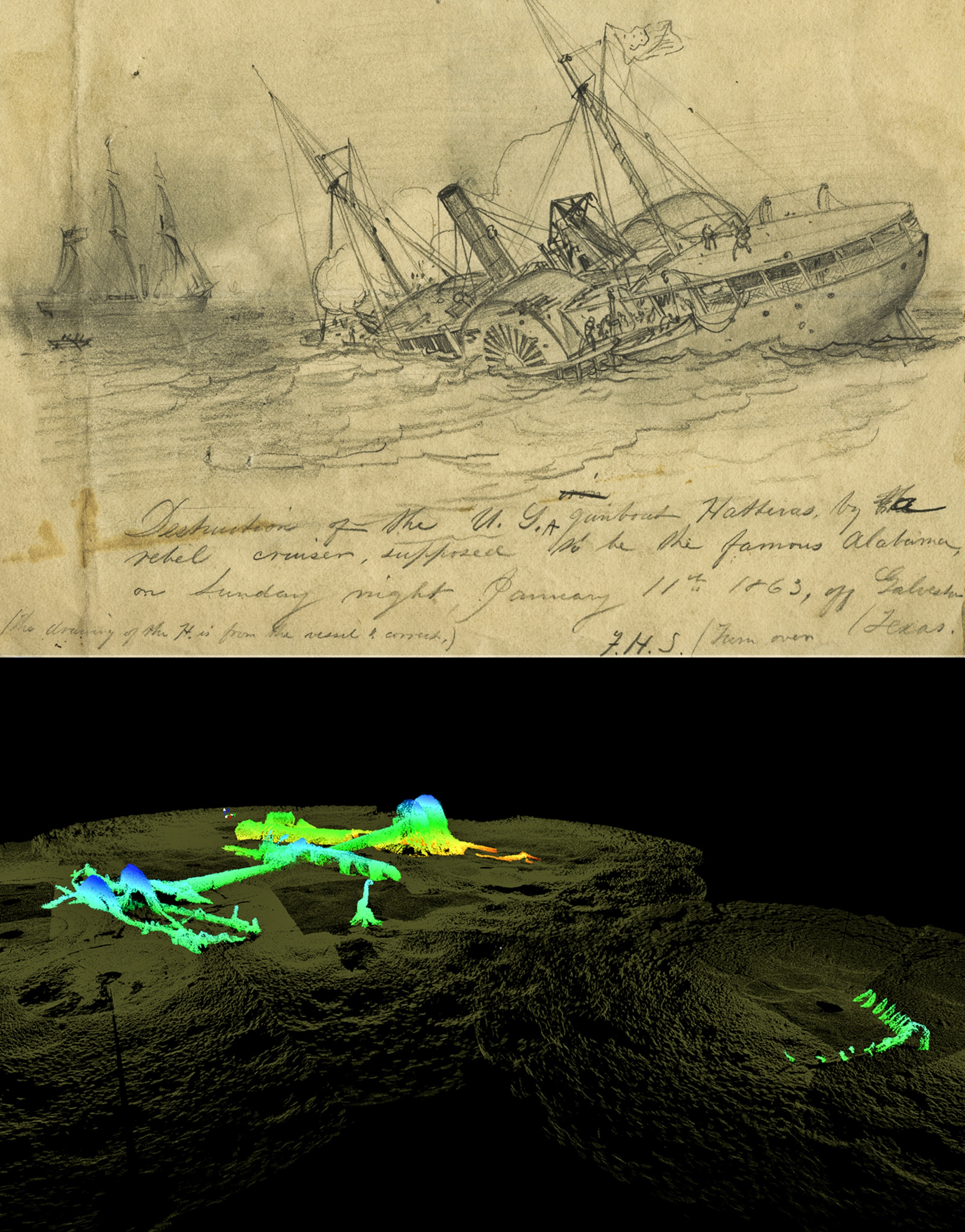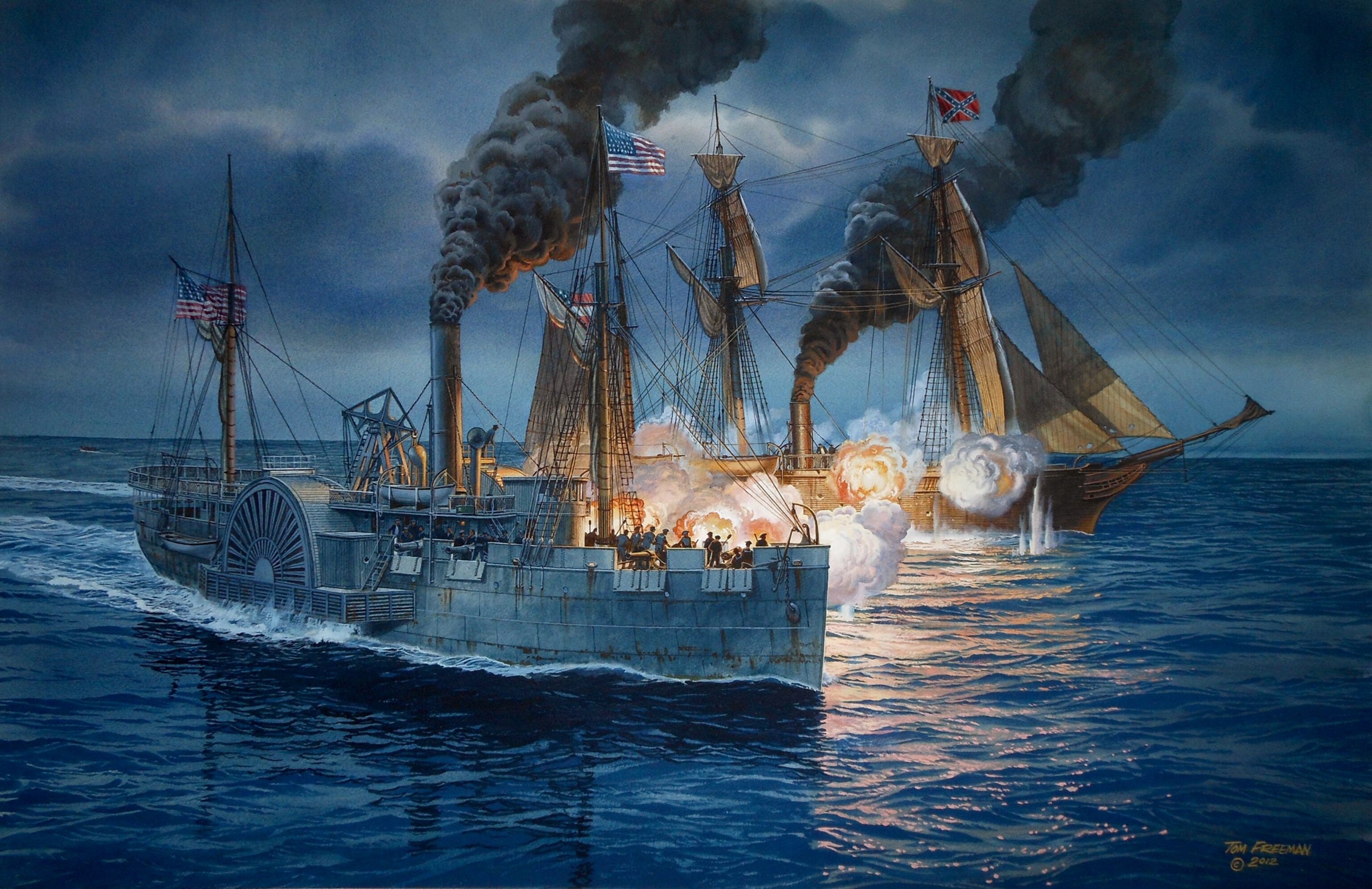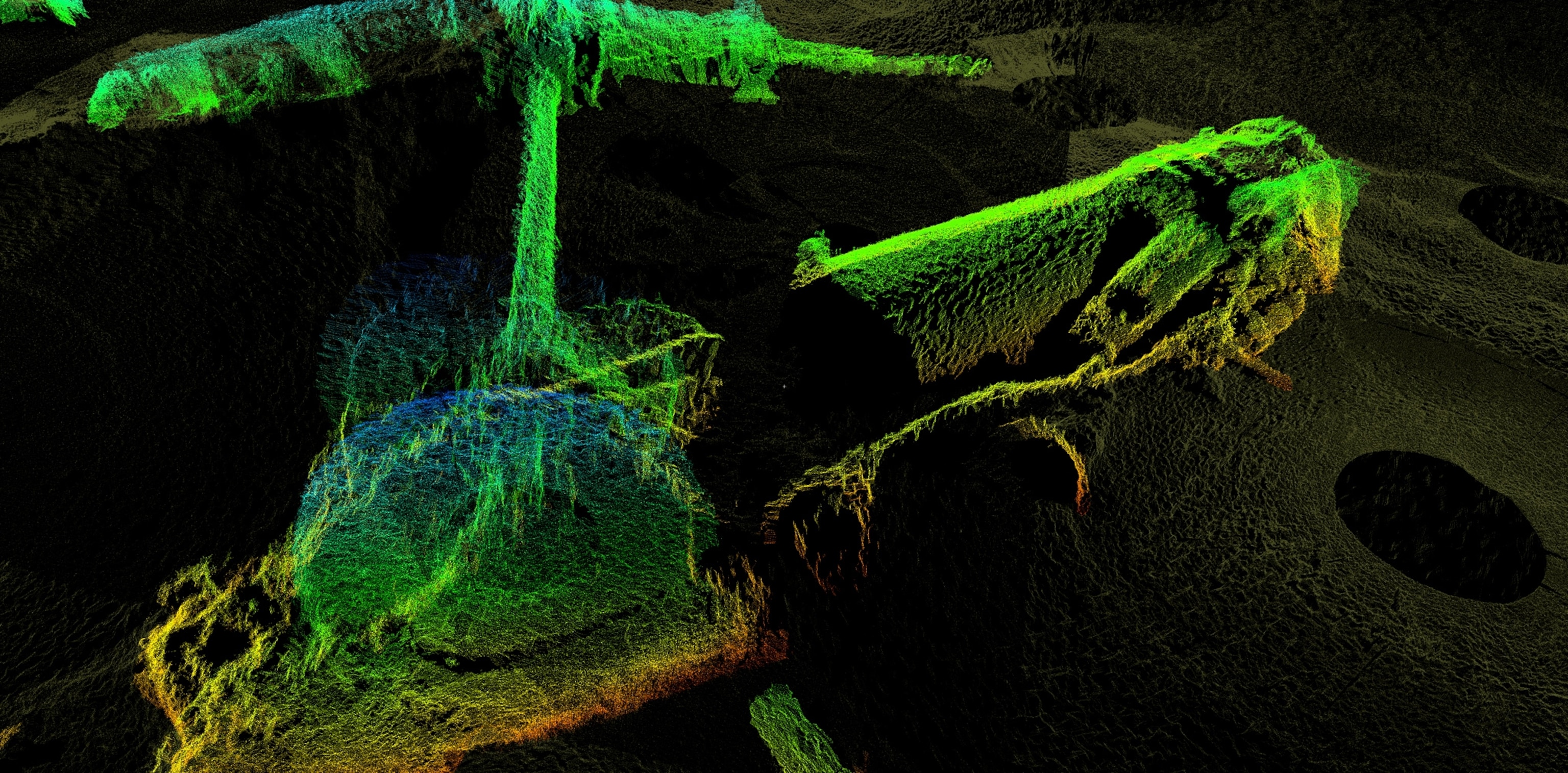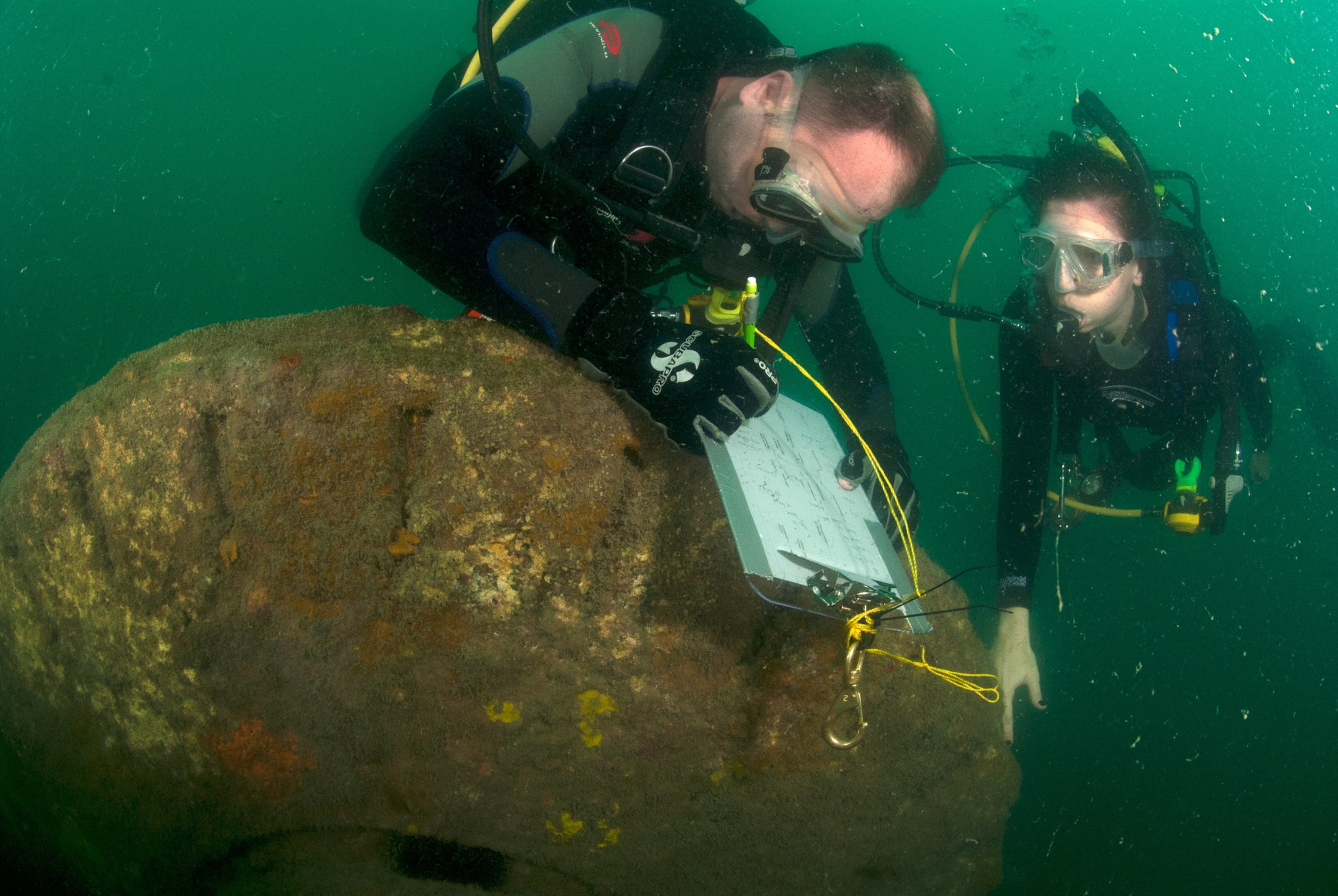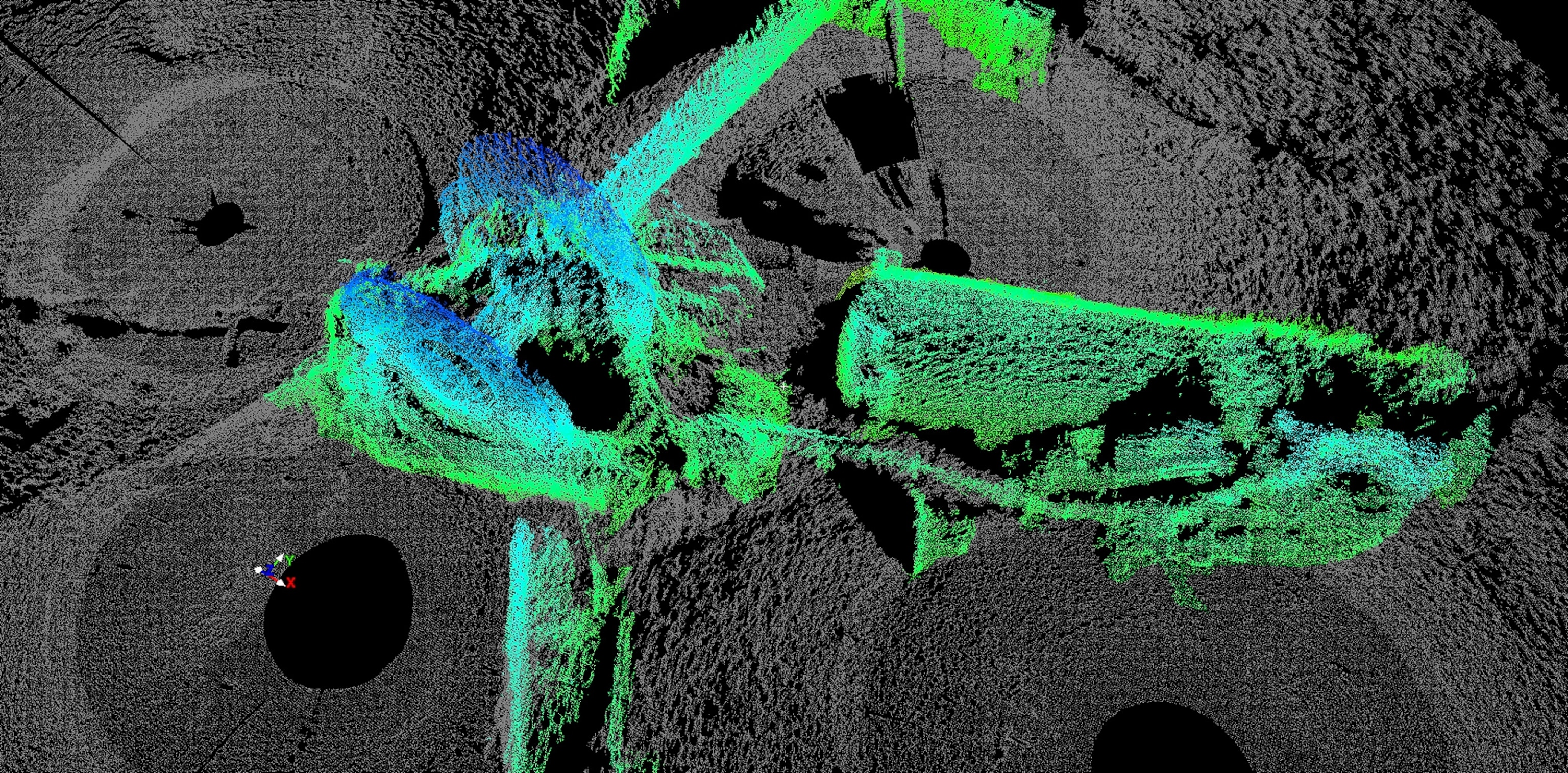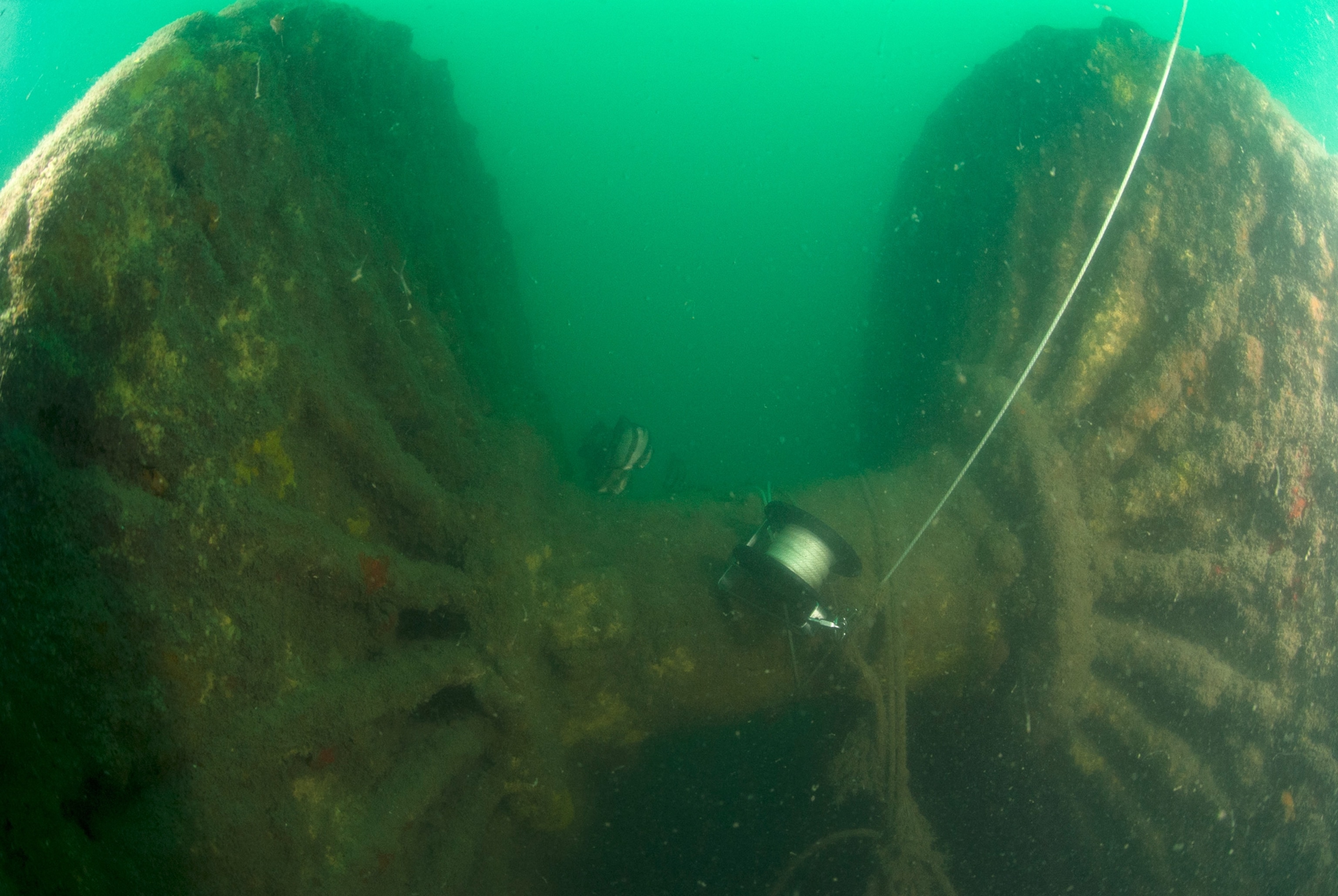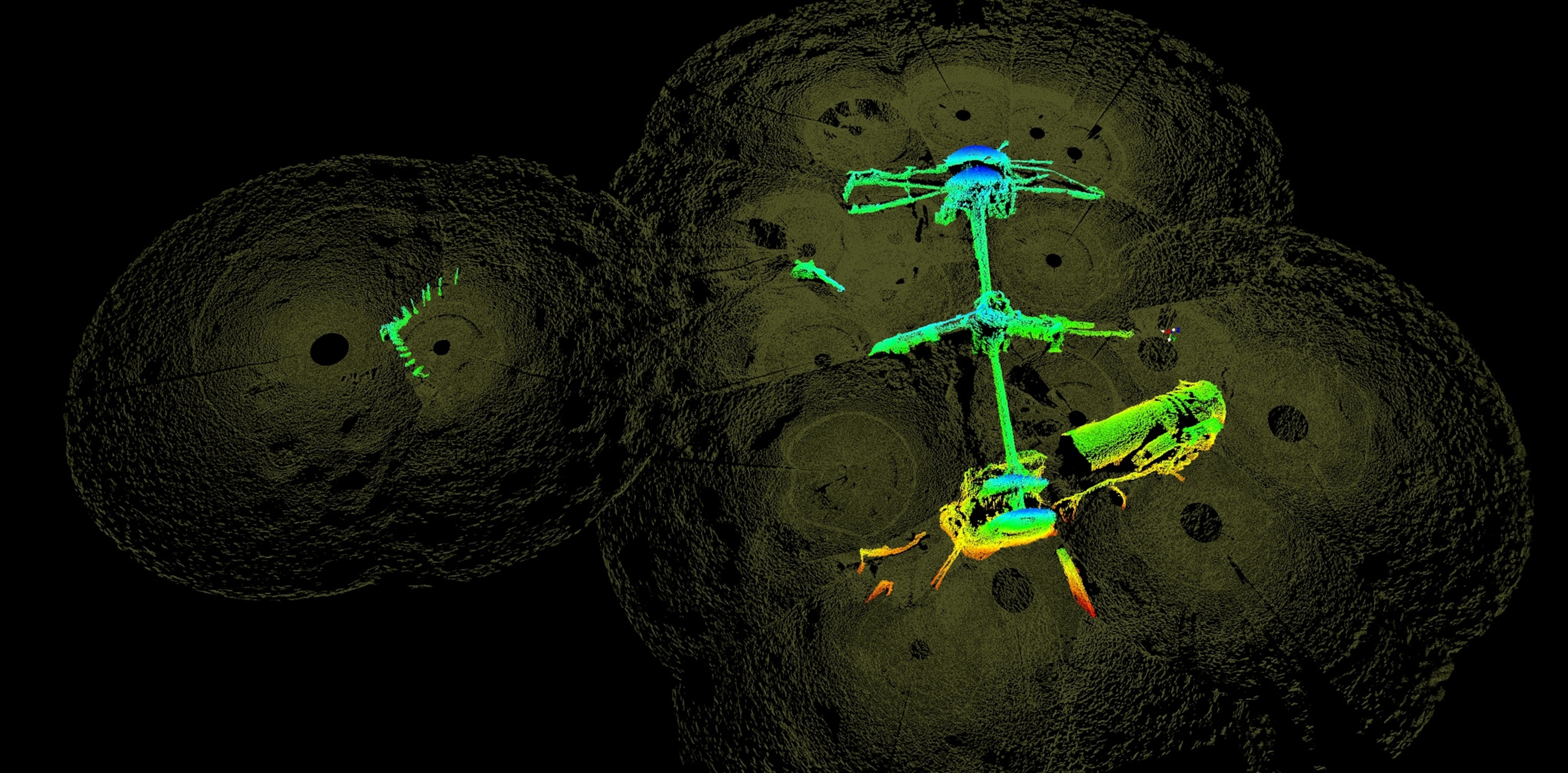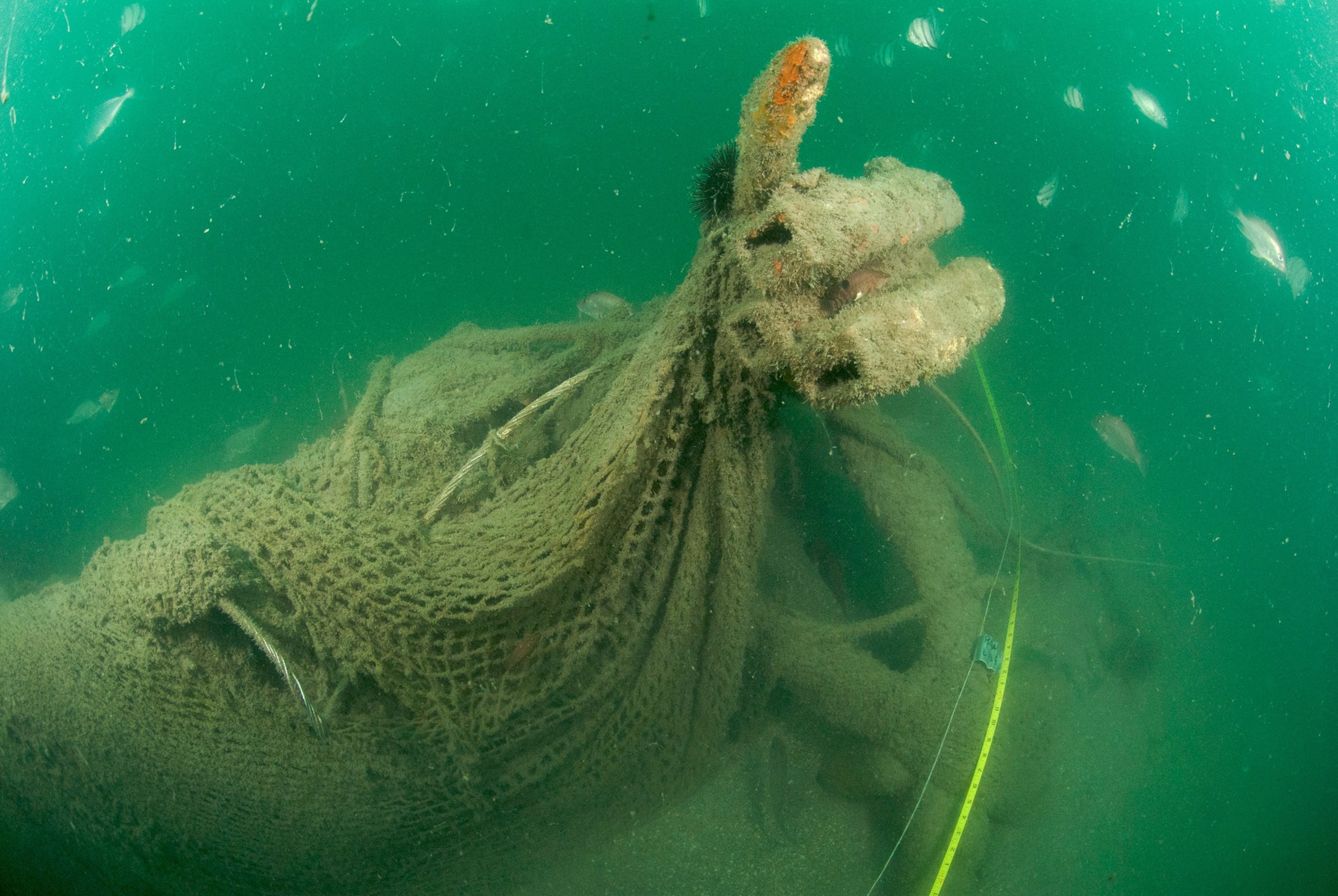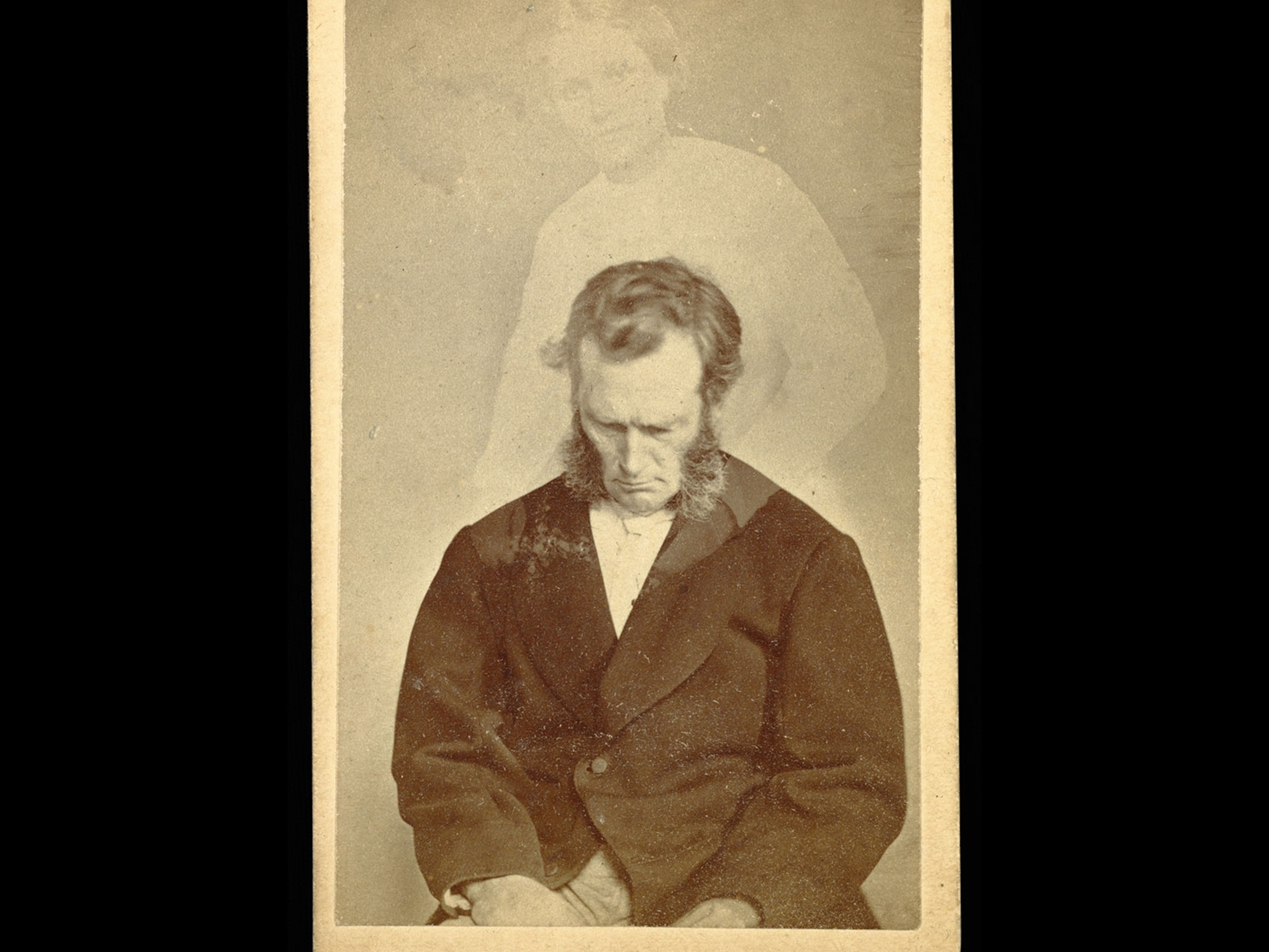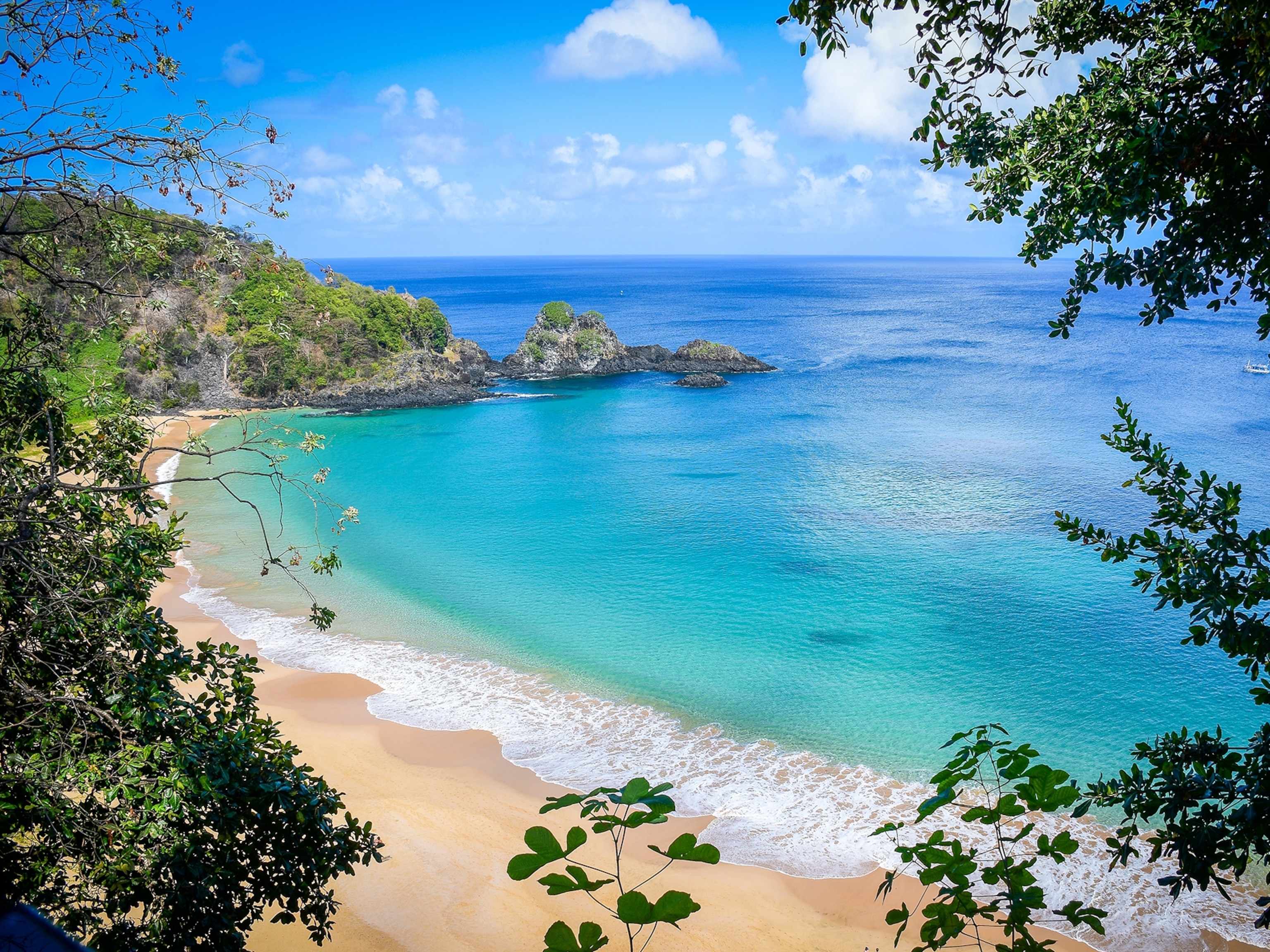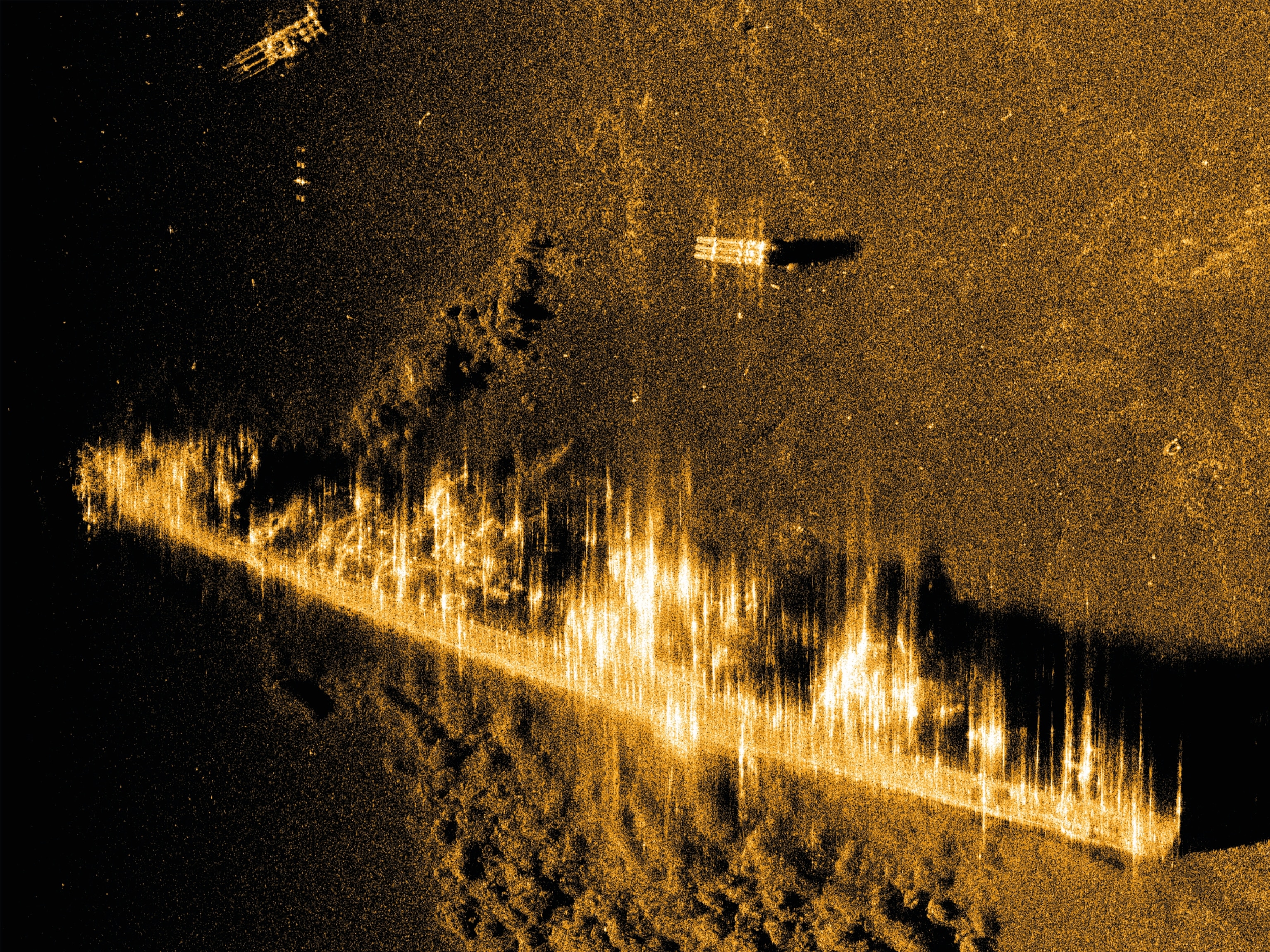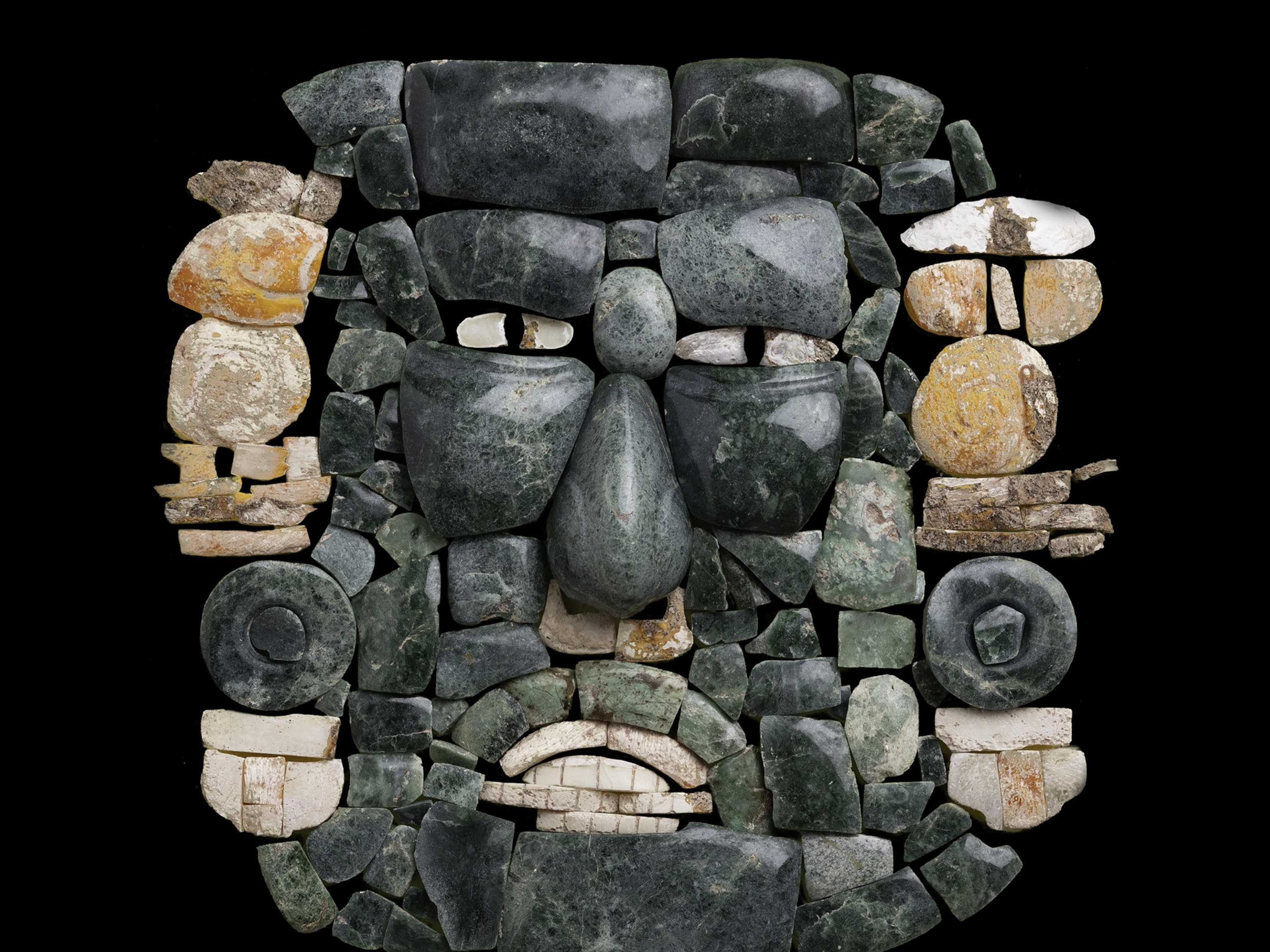Time CapsuleNew 3-D images (bottom picture) released today by the U.S. National Oceanic and Atmospheric Administration (NOAA) show the Civil War-era gunboat U.S.S Hatteras (top) in exquisite detail. Severe storms, such as 2008's Hurricane Ike, have moved sand off of the shipwreck that sank during a battle exactly 150 years ago, on January 11, 1863.Resting in 57 feet (17 meters) of water, the shifting sands enabled archaeologists to go in with high-resolution sonars and map newly uncovered parts of the wreck.The resolution is so good, "it's almost photographic," said archaeologist James Delgado, director of maritime heritage for NOAA's Office of National Marine Sanctuaries. Delgado and his collaborators have also produced fly-through animations of the historic site and war grave."You literally are giving people virtual access to the incredible museum that sits at the bottom of the sea," he said.—Jane J. Lee Illustration courtesy Becker Collection, Boston College; sonar image courtesy Teledyne BlueView and James Glaeser, Northwest Hydro
